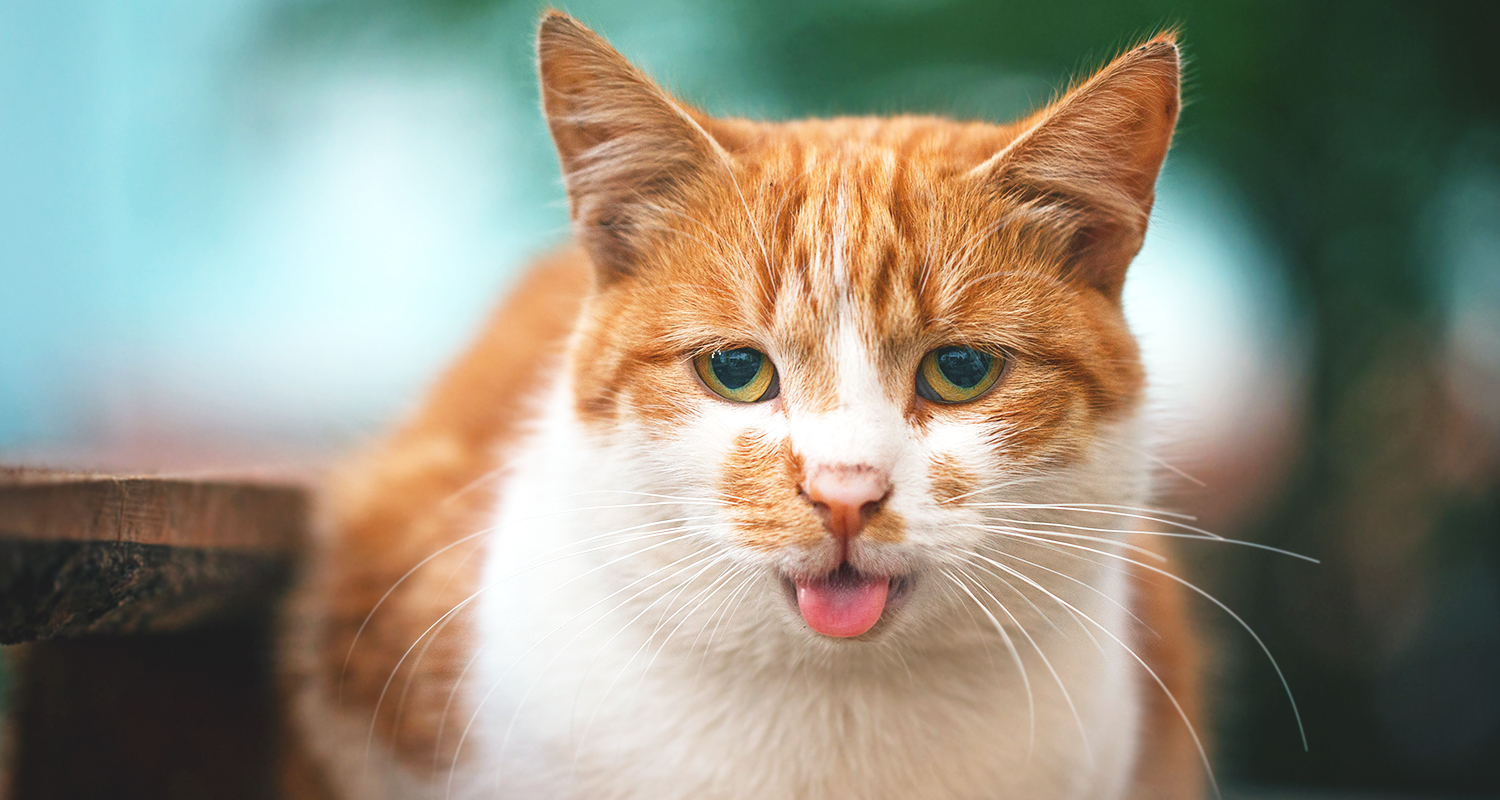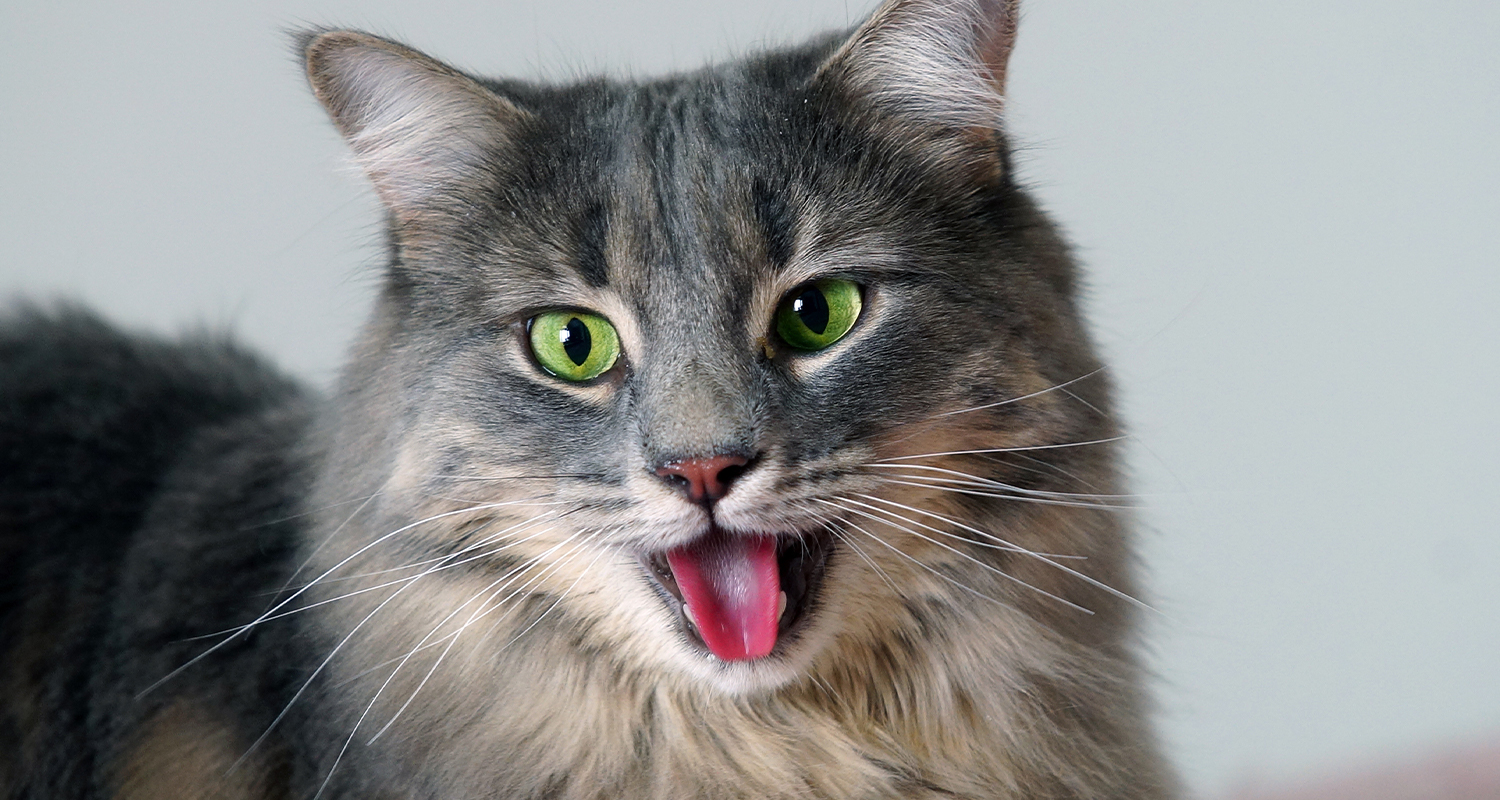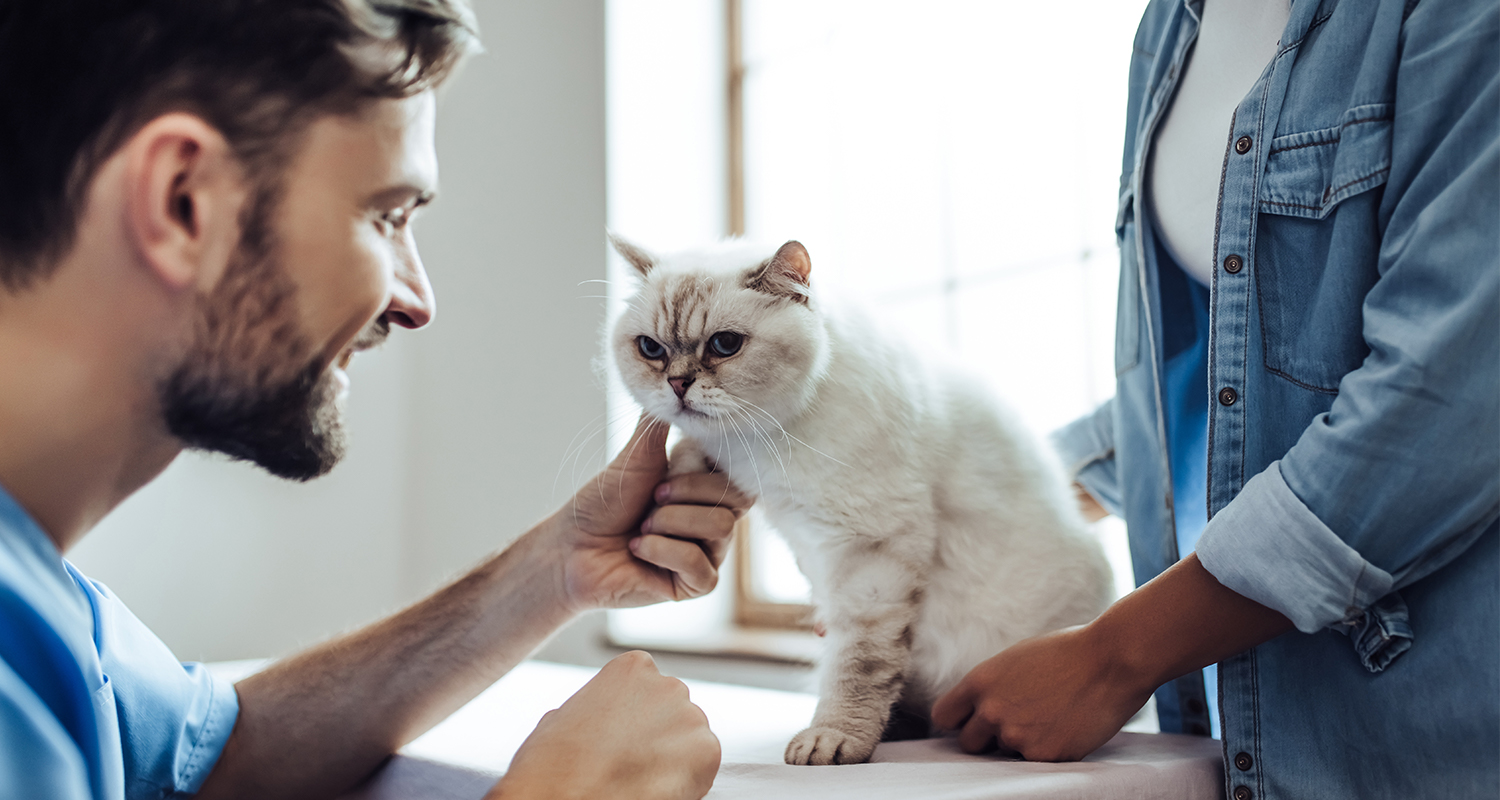
Why Is My Cat Panting?
Get more information about the possible causes and treatments of feline breathing problems.
Download the Full Guide to Cat Asthma
Panting isn’t something most pet owners expect to see their cat doing, and can lead to concerns that something is wrong.
Though it’s not a common occurrence, cats do sometimes pant depending on the situation. Most commonly, you may notice your cat or kitten panting if they are in a stressful situation, overheated, or tired from physical activity. In those cases, panting is a normal response and should subside once they have a chance to cool down or rest.1
There are, however, some health concerns that can cause your cat to pant, so it’s important to pay attention to your cat or kitten’s behaviour.
What Does Cat Panting Look And Sound Like?
Panting in cats can look similar to how dogs pant, but it’s not nearly as common.
Your cat or kitten will have their mouth open, tongue partially out, and be taking small shallow breaths in and out. Your cat is mostly likely to be laying down while doing this, but they might be standing up and alert if they are stressed about the situation around them.

What Causes Cats To Pant?
1. Asthma
Asthma is chronic inflammation of the lungs and is relatively common in cats. Feline asthma is similar to human asthma and has many of the same triggers, including stress and allergens. These triggers can cause an asthma attack which could manifest as coughing, wheezing, panting, and increased respiratory rate.
Read our resource on cat asthma to learn more, including the symptoms, causes, and treatment.
2. Heartworm
Heartworms are small parasites that can infect the heart and lungs of your cat or kitten. These small creatures can trigger a major illness known as Heartworm Associated Respiratory Disease (HARD) that causes your cat to pant, wheeze, or cough.
Heartworm and HARD can turn serious very quickly so it’s important you watch for additional symptoms accompanying any panting, including lethargy, hiding, lack of appetite, as well as wheezing, coughing, or other signs of respiratory distress.2
3. Congestive Heart Failure
Heart problems can, unfortunately, be common in cats and kittens and can easily go unnoticed. Depending on the specific heart issue, your cat may not show any outward signs until the condition has progressed and becomes an urgent issue.
Heart failure can cause fluid to accumulate around the lungs, reducing lung capacity and restricting oxygen levels.3 Watch for panting, rapid breathing, and blue-tinged or pale gums as these can be signs of congestive heart failure. This can quickly become a critical situation and you should contact your veterinarian immediately or seek emergency veterinary care.
4. Respiratory Infection
Cats and kittens can be particularly prone to upper respiratory infections (also known as cat flu). Symptoms look similar to the symptoms of a human cold like coughing, wheezing, sneezing, and panting.
If you notice these symptoms, make an appointment with your veterinarian to ensure it’s being treated early before it evolves into something more serious.4
5. Anemia
Red blood cells are the vehicles that bring oxygen to the rest of the body. If your cat is not getting enough oxygen it may manifest as panting, rapid or heavy breathing, as well as tiring very easily.5 6
6. Stress Or Trauma
All cats and kittens react differently to stress and emotional trauma. Reactions include hiding, shaking, bathroom accidents, vocalization, and panting.7 Depending on what the trigger of the trauma is, these symptoms will go away once the trigger is removed or you are successful in calming your cat or kitten. If they came from an abusive situation or experienced neglect, they may need special handling to help them through their traumatic experience.
7. Pain
Pain can look like many things in cats and kittens as they are very good at disguising pain as a defense mechanism. Panting is one sign that your cat may be in pain. If the panting is accompanied by other symptoms like aggressive behaviour, rapid pulse, excessive vocalization, excessive purring, changes in mobility, or changes in eating behaviours, this can mean your cat is in pain and needs medical attention.8
What To Do If Your Cat Is Panting
If your cat has been playing or running around, panting is normal. Give your cat or kitten a chance to rest and their breathing should return to normal.
If they are overly warm from being outside or in a warm room, take them to a cooler place and give them plenty of water. Once they are cooled down and relaxed, their panting should stop.
Your cat could also be stressed and fearful due to a trigger related to past trauma. Be mindful of what that trigger could be and do your best to remove it. Loud noises, dogs or other animals, and people are common triggers.
If the panting is accompanied by any of the other symptoms listed above, call your vet immediately. They may schedule an appointment for you or they may instruct you to go to your nearest emergency veterinary clinic depending on the severity of the other symptoms.
When Should You Be Concerned About Your Cat’s Panting?
Panting is less of a cause for concern if it happens following a lot of physical activity. However, if your cat is panting heavily or the panting is accompanied by other symptoms it can be an indication that there is a more serious underlying health concern.

Contact your veterinarian immediately if you notice any of the following symptoms:
- Your cat or kitten’s breathing becomes shallow
- The panting becomes loud, raspy, or rapid1
- Lethargy and loss of appetite
- Panting for a period, stopping, then starting again
- Hiding or aggression8
- Pale or blue-tinged gums9
- Panting accompanied by wheezing or rapid breathing1
Treatment For A Panting Cat
As soon as you notice your cat panting, take note of all the symptoms they’re experiencing and communicate them to your vet so he or she can start diagnosing. Knowing these symptoms can help your vet determine which tests need to be run to uncover the underlying issue.
Here are some possible treatments your vet may suggest:
- Antibiotics to treat an infection
- Asthma inhalers
- Heartworm medication
- Surgery to treat heart conditions
- Therapy plan for a traumatized cat
Depending on the cause of the panting, treatments can look very different. It could be as simple as adjusting the care of your cat or kitten to work through their trauma, or as complex and serious as emergency surgery.
Always consult with your veterinarian and give them as much information as possible so they can give your cat the best treatment.

Treating Cat Asthma & Respiratory Infections
Asthma and upper respiratory issues are relatively common in cats and kittens and have many treatment options available, including antibiotic pills or inhalers. Learn more about cat asthma treatment options, including different medications available, their efficacy, and potential side effects.
Some infections are more serious than others or the infection may have progressed further requiring a more aggressive treatment. For that reason, catching respiratory infections early is imperative to keep your cat safe and keep the condition from progressing to an urgent matter. Learning how to recognize symptoms of panting and when you should be concerned will help you work with your veterinarian to determine the cause and best treatment for your cat or kitten.
Is Your Cat Having Breathing Difficulties?
Take the Feline Asthma Assessment to see if your cat may have asthma.
1 “Cat Panting: Why It Happens and What to Do About It” PetMD. Accessed March 24, 2020 (https://www.petmd.com/cat/general-health/cat-panting-why-it-happens-and…)
2 “Heartworm Basics” American Heartworm Society. Accessed March 24, 2020 (https://www.heartwormsociety.org/pet-owner-resources/heartworm-basics)
3 “Heart Disease In Cats” Cat Health. Accessed March 24, 2020 (https://www.cathealth.com/cat-health/cardiovascular/1666-heart-disease-…)
4 “Pneumonia” Cornell University College of Veterinary Medicine. Accessed March 24, 2020 (https://www.vet.cornell.edu/departments-centers-and-institutes/cornell-…)
5 “Panting in Cats: What Does It Mean? Cat Health. Accessed March 25, 2020 (https://www.cathealth.com/cat-health/respiratory/2535-panting-in-cats-w…)
6 “Anemia in Cats” Malcolm Weir, DVM, MSc, MPH; Ernest Ward, DVM. VCA Hospitals. Accessed March 24, 2020 (https://vcahospitals.com/know-your-pet/anemia-in-cats)
7 “How to Heal an Emotionally Traumatized Pet” PetMD. Accessed March 24, 2020 (https://www.petmd.com/dog/behavior/how-heal-emotionally-traumatized-pet)
8 “How Can I Tell If My Cat Is In Pain?” Jason Nicholas, BVM. Preventive Vet. Accessed March 24, 2020 (https://www.preventivevet.com/cats/how-can-i-tell-if-my-cat-is-in-pain)
9 “Cyanosis In Cats” Robin Downing, DVM, DAAPM, DACVSMR, CVPP, CRPP. VCA Hospitals. Accessed March 24, 2020 (https://vcahospitals.com/know-your-pet/cyanosis-in-cats)
